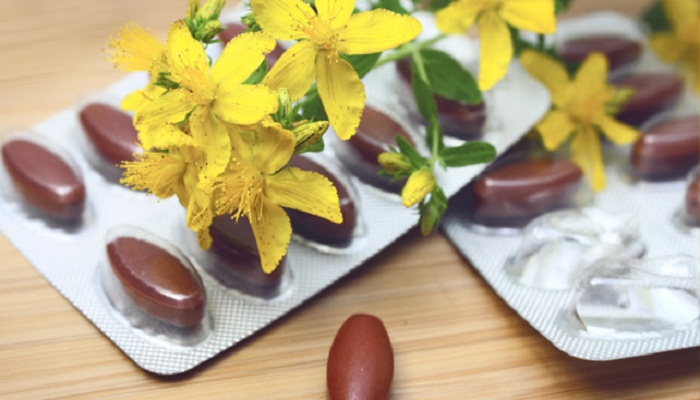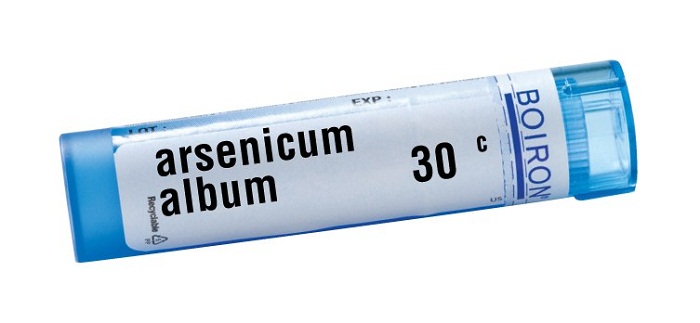“An allopath comes and treats cholera patients and gives them his medicines. The Homoeopath comes and gives his medicines and cures perhaps more than the allopath does because the Homoeopath does not disturb the patients but allows the nature to deal with them.” –Swami Vivekananda.
If you find tablets unappealing due to their unpleasant smell and lingering taste, there’s an alternative worth exploring. Consider trying commonly used homeopathic medicines. While they may take a bit longer than allopathic medicines to show results, they are natural and generally free from side effects. Homeopathy operates on the principle of “like cures like,” using substances that induce symptoms in a healthy person to treat similar symptoms in someone unwell. This natural approach provides an option for those seeking alternatives to conventional medications with potential side effects.
Understanding Homeopathy
Samuel Hahnemann, a German physician, developed and introduced Homeopathy as a system of natural medicine. It is primarily based on three central principles:
1. The Law of Similars
This foundational principle asserts that a substance causing symptoms in a healthy person can, in minute doses, treat similar symptoms in a person suffering from an illness. It is the core concept guiding the selection of homeopathic remedies.
2. The Law of Infinitesimals
Homeopathy often involves dilution of substances to extremely high levels, well beyond the point where molecules of the original substance may be present. This process, known as potentization, is believed to enhance the therapeutic properties while minimizing any potential toxic effects.
3. The Law of Succussion
After each dilution, the remedy undergoes a process called succussion, involving vigorous shaking or striking. This step is thought to activate the medicinal properties of the substance.
The ingredients used in homeopathic medicines are derived from various natural sources, including plants, minerals, and animals. These substances are selected and prepared in a way that harnesses their healing properties while minimizing toxicity.
One notable advantage of homeopathy is its compatibility with other forms of medicine. Homeopathic remedies can often be safely taken alongside conventional medications without the risk of adverse interactions or side effects.
Unlike some conventional medicines that may suppress symptoms, homeopathy is believed to work in harmony with the body’s natural healing mechanisms. By stimulating the body’s vital force, homeopathy seeks to address the root cause of symptoms, promoting overall well-being.
You can clear all your confusions between Allopathy, Homeopathy, and Ayurveda in this article.
So, let’s dive into 10 commonly used homeopathic medicines and the symptoms for which they are used.
Commonly Used Homeopathic Medicines:
1. Hypericum
 Hypericum Perforatum (Source: healthline.com)
Hypericum Perforatum (Source: healthline.com)
The herbal name of Hypericum is St. John’s Wort, which is primarily known for treating anxiety and depression. As a homeopathic remedy, it is known for its effectiveness in nerve injuries. It helps with emotional nervousness by altering brain chemistry in such a way that it improves your mood.
Used in:
- Nerve Injuries: Hypericum is well-known for its application in nerve injuries, especially injuries to fingers, toes, and areas rich in nerve endings. It is indicated when there is shooting, radiating pain.
- Spinal Injuries: It is used for injuries to the spine, coccyx, and tailbone, where there is shooting or sharp pain along the nerves.
- Crushed Fingers or Toes: Hypericum is indicated for injuries involving crushing, such as getting fingers or toes caught in a door, where there is intense pain along the nerve pathways.
- Punctured Wounds: It is prescribed for puncture wounds, including bites and stings, where there is shooting pain along the nerves.
- Sciatica: Hypericum may be considered for sciatic pain, especially when there is shooting pain down the leg.
- Post-Surgical Pain: It is used post-surgically to alleviate nerve pain, especially after procedures that involve nerves.
2. Rhus Tox (Poison Ivy)
 Rhus Tox (Source: homeopathicremediesblog.com)
Rhus Tox (Source: homeopathicremediesblog.com)
The herbal name of Rhus Tox is Poison Ivy, which often helps to reduce body aches, backache, and sprains. It is one of the most commonly used homeopathic medicines is effective in curing skin diseases such as chicken pox, poison ivy, fever blisters, and rashes. Additionally, it is used for symptoms associated with strains and overexertion.
Used in:
- Muscle and joint pain: Rhus Tox is often prescribed for conditions involving muscle and joint pain, such as rheumatism and arthritis. It is indicated when the pain is worse during initial movement but improves with continued motion.
- Sprains and strains: It is used for injuries, sprains, and strains, particularly when there is stiffness and pain that is relieved by gentle movement or warmth.
- Skin conditions: Rhus Tox may be considered for certain skin conditions, including herpes zoster (shingles) and eczema, where there is intense itching and burning.
- Back pain: It is prescribed for lower back pain, especially when the pain is aggravated by rest and relieved by motion.
- Fever: Rhus Tox is indicated for fevers with restlessness, thirst, and a desire for moderate amounts of water.
- Respiratory issues: It may be used for respiratory conditions such as bronchitis and coughs, where the cough is worse at night and accompanied by a sore chest.
3. Bryonia
 Bryonia Alba (Source: homeopathicremediesblog.com)
Bryonia Alba (Source: homeopathicremediesblog.com)
Bryonia Alba, commonly known as Bryonia, is a homeopathic remedy derived from the root of the Bryony plant. It is well-known for its applications in addressing a variety of physical symptoms. Some of these symptoms include feeling tired, thirsty, irritable and extreme pain on the minimal movement.
Used in:
- Joint and muscle pain: Bryonia is often prescribed for sharp, stitching pains in the joints and muscles. It is indicated for conditions such as rheumatism and arthritis, where movement worsens the pain, and the affected area may be red and swollen.
- Respiratory issues: It is used for respiratory conditions such as dry coughs, pleurisy, and bronchitis, where the cough is aggravated by movement and accompanied by sharp chest pain.
- Gastrointestinal disorders: Bryonia is indicated for digestive issues such as constipation with dry, hard stools, and abdominal pain that worsens with movement. It may be considered for conditions like gastritis and colitis.
- Headaches: It is prescribed for headaches that are aggravated by motion, especially in cases of migraines or tension headaches.
- Fever: Bryonia is used for fevers where there is extreme thirst for large quantities of cold water, and the patient prefers to remain still as movement worsens symptoms.
- Injuries and sprains: Bryonia is indicated for injuries, strains, and sprains where the affected area is hot, swollen, and painful, and any movement exacerbates the pain.
4. Euphrasia
 Euphrasia (Source: herbal-supplement-resource.com)
Euphrasia (Source: herbal-supplement-resource.com)
Euphrasia Officinalis, commonly known as Euphrasia or Eyebright, is a homeopathic remedy derived from the flowering plant Euphrasia. It is primarily associated with eye conditions but is also used for a range of other symptoms. Euphrasia gives immediate relief if someone is suffering from inflamed, burning red eyes or some kind of allergy.
Used in:
- Eye conditions: Euphrasia is most well-known for its use in treating various eye conditions, including conjunctivitis (pink eye), eye irritation, and watery eyes. It is indicated when there is profuse tearing that is acrid, burning, and accompanied by a bland nasal discharge.
- Cold and respiratory issues: It is used for cold and respiratory infections with symptoms such as watery nasal discharge, sneezing, and coughing. The nasal discharge may be bland, similar to the eye symptoms.
- Allergies: Euphrasia may be considered for allergic conditions, especially when there are symptoms such as itching and watering of the eyes, along with a runny nose.
- Headaches: It is indicated for headaches, particularly those associated with eye strain and visual disturbances.
- Digestive complaints: Euphrasia may be used for digestive issues, such as nausea and regurgitation, when accompanied by watering eyes.
5. Lycopodium
 Lycopodium (Source: en.honatur.com)
Lycopodium (Source: en.honatur.com)
Lycopodium Clavatum, commonly known as Lycopodium, is a widely used homeopathic remedy derived from the spores of the club moss. It is known for its effectiveness in addressing a variety of physical and emotional symptoms.
Used in:
- Digestive Issues: Lycopodium is often prescribed for digestive disorders, including bloating, flatulence, and indigestion. It may be indicated for conditions such as irritable bowel syndrome (IBS) and dyspepsia.
- Liver and Gallbladder Complaints: It is used for liver and gallbladder issues, especially when symptoms include pain or discomfort in the right upper abdomen. Lycopodium may be considered for individuals with gallstones or liver dysfunction.
- Urinary Problems: Lycopodium is indicated for urinary problems such as difficulty urinating, incomplete emptying of the bladder, and urinary tract infections.
- Respiratory Conditions: It may be prescribed for respiratory conditions such as asthma and bronchitis, especially when symptoms include difficulty breathing, coughing, and a sensation of fullness in the chest.
- Skin Conditions: Lycopodium is used for certain skin conditions, including eczema and psoriasis, where symptoms involve itching, dryness, and eruptions.
- Male Reproductive Issues: It is considered for male reproductive issues, including erectile dysfunction and premature ejaculation.
6. Aconite
 Aconite (Source: voxnature.com)
Aconite (Source: voxnature.com)
Aconitum Napellus, commonly known as Aconite, is a well-known homeopathic remedy derived from the plant Aconitum napellus. It is often used for addressing acute and sudden-onset conditions.
Used in:
- Fever and infections: Aconite is commonly prescribed at the onset of illnesses, especially when symptoms develop rapidly after exposure to cold and dry winds. It is often indicated for fever, flu, and respiratory infections.
- Sudden colds and influenza: It is used for colds and influenza that come on suddenly, with symptoms like high fever, restlessness, and anxiety.
- Shock and trauma: Aconite is considered for conditions arising from shock or trauma, both physical and emotional. It is often recommended after fright, accidents, or sudden emotional distress.
- Inflammatory conditions: It may be indicated in the early stages of inflammatory conditions, such as tonsillitis, conjunctivitis, and ear infections.
- Restlessness and anxiety: Aconite is known for addressing restlessness, anxiety, and fear, especially in situations where the individual is agitated and fearful of death.
- Insomnia: It may be used for insomnia, particularly when it is associated with restlessness and anxiety.
7. Graphites
 Graphites (Source: amazon.com)
Graphites (Source: amazon.com)
Graphites, a homeopathic medicine derived from pure graphite, is valued for its versatility in addressing a range of physical and emotional symptoms. It is is suitable for people suffering from poor muscle tone, poor nutrition, and overweight problems and is an appropriate medication for skin disorders occurring from the metabolic imbalance.
Used in:
- Skin conditions: Graphites is well-known for its effectiveness in treating various skin conditions. It may be indicated for eczema, psoriasis, dry and cracked skin, and conditions with oozing, sticky discharge. The skin symptoms are often associated with a tendency to form thick crusts.
- Menstrual disorders: It is commonly used for menstrual irregularities, especially in cases of delayed or scanty menstruation. Women experiencing premenstrual tension and breast tenderness may find relief with Graphites.
- Thyroid issues: Graphites may be considered for individuals with thyroid imbalances, especially hypothyroidism. Symptoms may include weight gain, fatigue, and sensitivity to cold.
- Gastrointestinal issues: It is indicated for digestive problems, including constipation with hard stools, bloating, and flatulence. Graphites may be beneficial for individuals with a sluggish digestive system.
- Eye conditions: In homeopathy, Graphites is used for certain eye conditions, such as styes with sticky discharge and dryness of the eyes.
- Eczema behind ears: Graphites is specifically known for eczema occurring behind the ears, with oozing and crust formation.
8. Arsen Alb
 Arsenicum Album (Source: amazingwellnessmag.com)
Arsenicum Album (Source: amazingwellnessmag.com)
Arsenicum Album, commonly known as Arsen Alb, is a key homeopathic remedy derived from arsenic trioxide. It has a wide range of applications and is often used to address various physical and emotional symptoms.
Used in:
- Gastrointestinal disorders: Arsen Alb is frequently prescribed for gastroenteritis, food poisoning, and stomach flu. It is indicated when there is vomiting, diarrhea, and abdominal pain, often accompanied by restlessness and anxiety.
- Respiratory conditions: It is a prominent remedy for respiratory issues such as influenza, colds, and bronchitis. It may be considered when there is a combination of symptoms like cough, wheezing, and shortness of breath, especially worsened by cold air.
- Anxiety and restlessness: Arsen Alb is known for addressing symptoms of anxiety, restlessness, and fear. Individuals who may benefit from this remedy may exhibit a fastidious nature and a need for reassurance.
- Allergies and Hay fever: It is used for allergies, particularly hay fever, where symptoms include sneezing, runny nose, and watery eyes. Symptoms may be aggravated by exposure to cold air.
- Skin conditions: Arsen Alb may be considered for certain skin conditions, such as eczema and psoriasis, with symptoms of itching, burning, and dryness.
- Food poisoning: When symptoms of food poisoning include nausea, vomiting, diarrhea, and weakness, Arsen Alb is often considered.
9. Hepar Sulph
 Hepar Sulph (Source: vitaminbay.com)
Hepar Sulph (Source: vitaminbay.com)
Hepar Sulphuris Calcareum, commonly known as Hepar Sulph or Hepar Sulphur, is a homeopathic remedy derived from calcium sulfide. It is generally prescribed to patients who suffer from conditions that have a tendency to get infected and produce pus. It is a valuable remedy with diverse applications, particularly known for its effectiveness in treating various skin and respiratory conditions.
Used in:
- Abscesses and boils: Hepar Sulph is often prescribed for the suppuration stage of abscesses and boils. It helps promote the drainage of pus, easing pain and accelerating the healing process.
- Respiratory conditions: It is a prominent remedy for respiratory infections, especially when symptoms involve thick, yellow-green mucus and a sensation of rawness or splinter-like pains. It may be considered for conditions like bronchitis and certain types of coughs.
- Ear infections: Hepar Sulph is indicated for ear infections, particularly when there is discharge of pus, sensitivity to cold air, and sharp, shooting ear pain.
- Skin conditions: It is used for various skin conditions, including acne, eczema, and impetigo, where there is a tendency for the formation of pus and sensitivity to touch.
- Dental issues: In homeopathy, Hepar Sulph is considered for dental abscesses and gum boils, where there is extreme sensitivity to touch and exposure to cold air.
- Sinusitis: It may be prescribed for sinusitis, especially when there is a thick, yellow discharge and pain aggravated by exposure to cold air.
10. Kali Bichromicum
Kali Bichromicum, commonly known as Kali Bich, is a homeopathic remedy derived from potassium dichromate. It is a key remedy used in homeopathy and is known for its diverse applications in addressing various health issues. It is mainly used for treating conditions that have an impact on the nervous system.
Used in:
- Respiratory issues: Kali Bich is often prescribed for respiratory conditions, especially chronic sinusitis with thick, stringy, and yellow-green mucus. It may also be indicated for bronchitis and other respiratory infections.
- Sinusitis: It is a prominent remedy for sinus problems, particularly when there is frontal sinus pain, nasal congestion, and a sensation of pressure in the root of the nose.
- Digestive complaints: Kali Bich is used for digestive issues, including gastritis with vomiting of stringy mucus and a tendency toward ulcers. It may also be considered for certain liver complaints.
- Headaches: It is indicated for headaches, especially those associated with sinus congestion and frontal sinus pain. The headaches may feel as if a nail is being driven into the head.
- Skin conditions: In homeopathy, Kali Bichromicum is sometimes considered for certain skin conditions, particularly those with pustular eruptions and a tendency for the formation of crusts.
Conclusion
So next time you feel sick, try these commonly used homeopathic medicines (by consulting a known practitioner), rather than pushing your body towards the risks of major side effects by falling to Allopathic medicines. It’s important to remember that individualized care and consultation with a qualified homeopathic practitioner remain key. Embracing the wisdom of homeopathy opens a door to a world where healing aligns with the body’s innate intelligence. Let these remedies be guides on our path to a healthier and harmonious life.
Related Articles:
